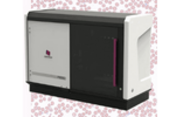Improving the Diagnostic Accuracy of the PD-L1 Test with Multiplexing and Image Analysis
sponsored by Ultivue
Targeting of the programmed cell death protein (PD-1)/ programmed death-ligand 1 (PD-L1) axis with checkpoint inhibitors has changed clinical practice in non-small cell lung cancer (NSCLC). However, clinical assessment remains complex and ambiguous.
During this webinar, Matt Humphries from the Patrick G Johnson Centre for Cancer Research at Queens University, Belfast, will discuss results presented in a recently published paper in the journal Cancers, “Improving the Diagnostic Accuracy of the PD-L1 Test with Image Analysis and Multiplex Hybridization.” In this study, the authors assessed whether the application of digital image analysis (DIA) and multiplex immunofluorescence to digital PD-L1 immunohistochemistry (IHC) slides has the potential to improve the accuracy and reproducibility of PD-L1 diagnostic tests.
This discussion will highlight:
- A comprehensive assessment of PD-L1 IHC using DIA on NSCLC reflex-tested cases, where the authors demonstrate the concordance with manual pathological assessment, evaluate the potential for DIA utilization in routine clinical diagnostics, the reasons for clinical discordance, and recommendations for PD-L1 case triage.
- The practicality and effectiveness of a clinically deployable PD-L1/cytokeratin/CD68/CD8/DAPI multiplex as a viable lab-developed test for the evaluation of PD-L1 reflex-tested cases in an accredited laboratory.
- How the application of DIA in clear-cut PD-L1 cases could streamline the pathology workflow, allowing pathologists to focus on more time-consuming cases.




















